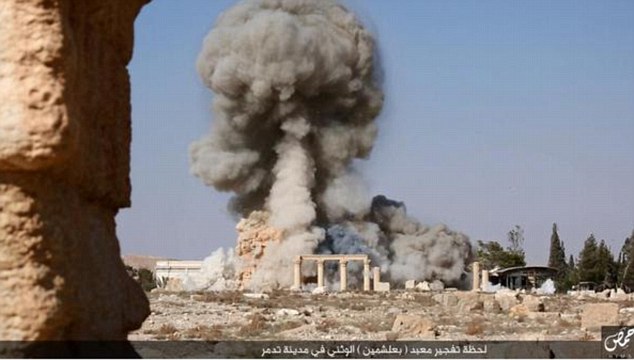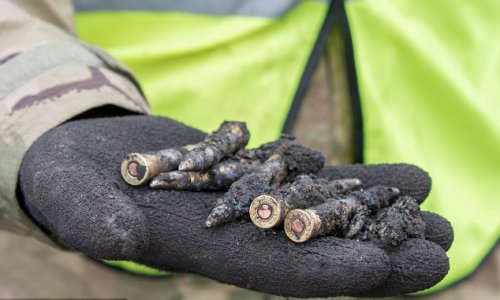The first shocking images have been released of ISIS blowing up an ancient temple in the Syrian archaeological treasure of Palmyra.
The Baalshamin temple had stood at the site for nearly 2,000 years and was considered one of the best preserved temple on the site.
Images showed the militants laying out rows of explosives before detonating them, with a plume of smoke rising from the ancient wonder before the rubble left behind is shown.
The destruction has been described as an 'immense loss for the Syrian people and for humanity' by the UN's cultural watchdog Unesco, who also labelled it a 'war crime'.
Meaning 'Lord of Heaven', the temple was dedicated to the ancient pagan god of Baal.
One witness, who goes by the name Nasser al-Thaer, said ISIS militants had been laying explosives around the temple for more than a month.
He said he feared for the other ancient sites in Palmyra but that no explosives have been placed around them.
Activists from the Britain-based Syrian Observatory for Human Rights suggested that the temple of Baalshamin may have been destroyed a month ago.
The news comes after ISIS used a bulldozer to demolish the 1,500-year-old Mar Elian Monastery, a national Syrian treasure, which has stood in Al-Qaryatayn since 432 AD.
ISIS supporters shared the pictures online and praised them for destroying the building because God 'was not worshipped there'.
The extremists also captured more than 200 people when they seized Al-Qaryatayn on August 6 and took 100 of them to the group's de-facto capital of Raqqa.
The desecrated Assyrian monastery took its name from Saint Elian, who was martyred after refusing to denounce his Christianity at the hands of his father, a Roman officer. Many 'miracles' were attributed to St Elian, who was a doctor.
The church was built on the spot where he died and his remains still rest in a small sarcophagus in a small chapel near its main crypt.
When Mar Elian was renovated in 1969, the plaster which lined the walls was removed to reveal stunning murals of Jesus, Mary and prophets dating back to the 6th Century.
An Italian Jesuit priest, Father Paolo Dall'Oglio, began work to renovate the church one more time around ten years ago.
He was kidnapped by ISIS In July 2013 and although his fate is unknown, sources of the Assyrian International News Agency say he was killed by a Saudi-national upon capture.
Of the 230 people who were kidnapped by ISIS in Al-Qaryatayn a few weeks ago, the Syrian Observatory for Human Rights claims some were taken from a church.
Rami Abdulrahman, the head of the Observatory, told MailOnline that more than 100 of them - which may include Christians - have now been taken to ISIS's war-ravaged capital of Raqqa.
(dailymail.co.uk)







www.ann.az
Follow us !











